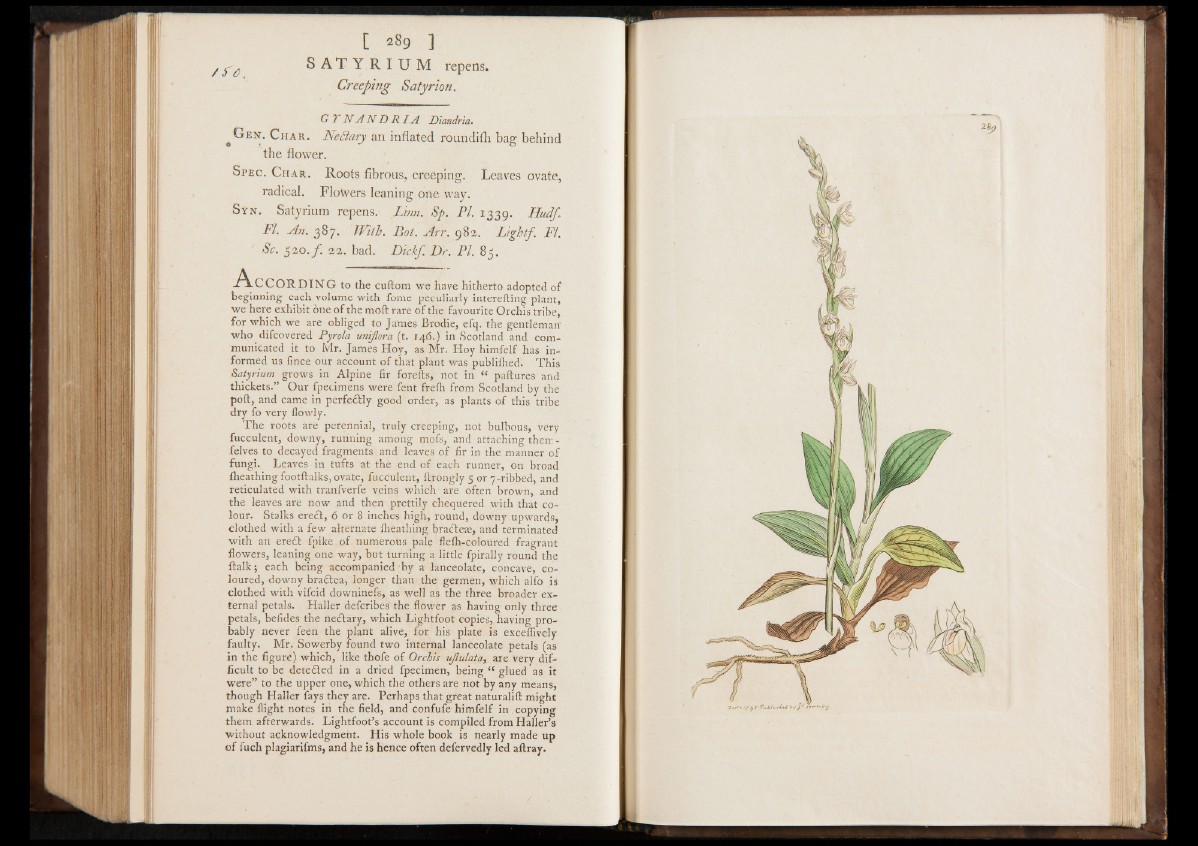
[ 2&9 ]
y S A T Y R I U M repens.
Creeping Satyrion.
G T N A N D R I A Diandria.
^G e n . C h a r . Neffary an inflated roundifh bag behind
the flower.
S pec. Char. Roots fibrous, creeping. Leaves ovate,
radical. Flowers leaning one way.
Syn. Satyrium repens. Linn. Sp. PI. 1 3 3 9 . Hudf.
FI. An. 3 8 7 . iVith. Pot. Arr. 9 8 2 . Lightf. FI.
Sc. $20. f . 2 2 . bad. Dick/. Dr. PI. 8 5 .
-A .C C O R D IN G to the cuftom we have hitherto adopted of
beginning each volume with fome peculiarly interefting plant,
we here exhibit one of the mod rare of the favourite Orchis tribe,
for which we are obliged to James Brodie, efq. the gentleman"
who difcovered Pyrola uniflora (t. 146.) in Scotland and communicated
it to Mr. James Hoy, as Mr. Hoy himfelf has informed
us fince our account of that plant was publilhed. This
Satyrium grows in Alpine fir forefts, not in “ paftures and
thickets.” Our fpecimens were fent frelh from Scotland by the
poll, and Came in perfedlly good order, as plants of this tribe
dry fo very flowly.
The roots are perennial, truly creeping, not bulbousj very
fucculent, downy, running among mofs, and attaching then -
felves to decayed fragments and leaves of fir in the manner of
fungi. Leaves in tufts at the end of each runner, on broad
Iheathing footftalks, ovate, fucculent, llrongly 5 or 7-ribbed, and
reticulated with tranfverfe veins which are often brown, and
the leaves are now and then prettily chequered with that colour.
Stalks eredt, 6 or 8 inches high, round, downy upwards,
clothed with a few alternate Iheathing bradlese, and terminated
with an ere& fpike of numerous pale flelh-coloured fragrant
flowers, leaning one way, but turning a little fpirally round the
fl:alk; each being accompanied by a lanceolate, concave, coloured,
downy braftea, longer than the germen, which alfo is
clothed with vifcid downinefs, as well as the three broader external
petals. Haller defcribes the flower as having only three
petals, befides the nedlary, which Lightfoot copies, having probably
never feen the plant alive, for his plate is exceffively
faulty. Mr. Sowerby found two internal lanceolate petals (as
in the figure) which, like thofe of Orchis uflulata, are very difficult
to be detedled in a dried fpecimen, being “ glued as it
were” to the upper one, which the others are not by any means,
though Haller fays they are. Perhaps that great naturalift might
make flight notes in the field, and confufe himfelf in copying
them afterwards. Lightfoot’s account is compiled from Haller’s
without acknowledgment. His whole book is nearly made up
of fuch plagiarifms, and he is hence often defervedly led allray.